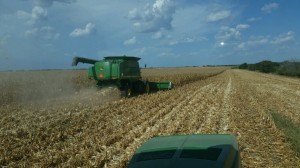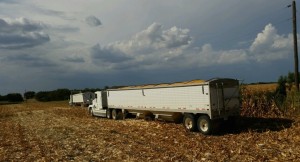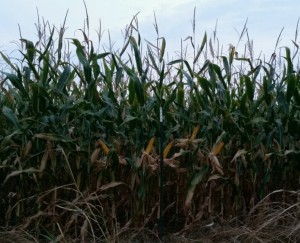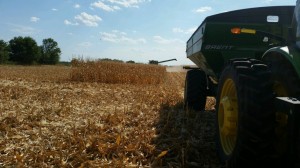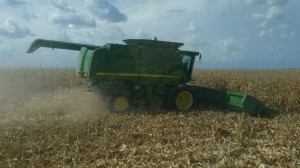It is corn harvest time on Uncle Joe’s farm.
The combine is racing down the rows of dried stalks.
The grain trucks are piled full to overflowing with the golden kernels
Standing tall at 8-9 feet in height, Uncle Joe says, “It’s the best #2 corn you can get.”
#2 corn is intended for livestock feed and ethanol production. #1 corn is food grade and is used to make vegetable oils and other products consumed by humans. Where I grew up in heartlands of Iowa and where I live now near the farmlands of Texas, most corn is #2.
This year’s harvest of #2 corn is a record. Uncle Joe says the yields range from 120-170 bushels per acre. The corn is clean with a heavy test weight and free of contaminants. It is excellent corn.
As the grain buggy pulls away in the evening light, the golden amber of the standing stalks and cut stubble reflect the bounty of the harvest and the beauty of the land.
Never doubt that the life of the farmer is uncertain.
In the midst of a glorious corn harvest, the harsh realities of life intrude. Uncle Joe and the other farmers have the trucks to take their corn to the grain elevators, but the grain elevators cannot send the grain from the storage bins to market. There is a shortage of trucks to move the corn from the elevators. Uncle Joe is halfway through the corn harvest, but he has to wait and time his combining to the space available in the grain elevators.
Why? That is a good question and there are apparently a number of factors contributing to the holdup. The oil & gas industry is booming in these parts, which is wonderful, and trucks are needed to support the boom. The just-completed milo/sorghum harvest was outstanding, which is wonderful, but the trucks moving the milo to market are not yet available to turn and transport the corn. And, some corn buyers, for their own reasons, are not ready to take delivery of corn and are not sending trucks to pick up their grain.
As you can see below, the bright flashing combine with the corn head is ready and rearing to keep on cutting, but Uncle Joe has had to slow down the big green muncher machine to cut only enough corn to load two semi truck loads a day, the most the elevator can process from his farm.
To add trouble to tumult, corn prices are down. Why? That is another good question. Official reports are portraying a carry-over supply of corn from last year’s harvest. Administrative communications are also touting the forthcoming harvest in the Midwestern States, including my birth-state of Iowa, to be exceptionable. In other words, the published position is projected over-supply versus present demand, and, with this forecast, the classic supply and demand paradigm has driven corn prices down.
Never doubt the life of a farmer is uncertain.
When I talk with Uncle Joe, he is even and balanced in his answers and facts. There is not a hurry to his words. The worry is there, between the sentences, in the background, but not pushing forward. The doing is in the front of his talk and his actions. He is optimistic. The milo bins at the elevator are almost cleaned out, and that will open up space to combine and deliver more corn. And, there’s always plenty else to do and keep busy at around the farm. There’s never enough hours in a day.
As Uncle Joe puts the last of the equipment away, he stays and stands a moment to watch the sunset off across the fields before heading in — to supper, a short sleep and another early morning.
Never doubt the life of a farmer.
Grandpa Jim

